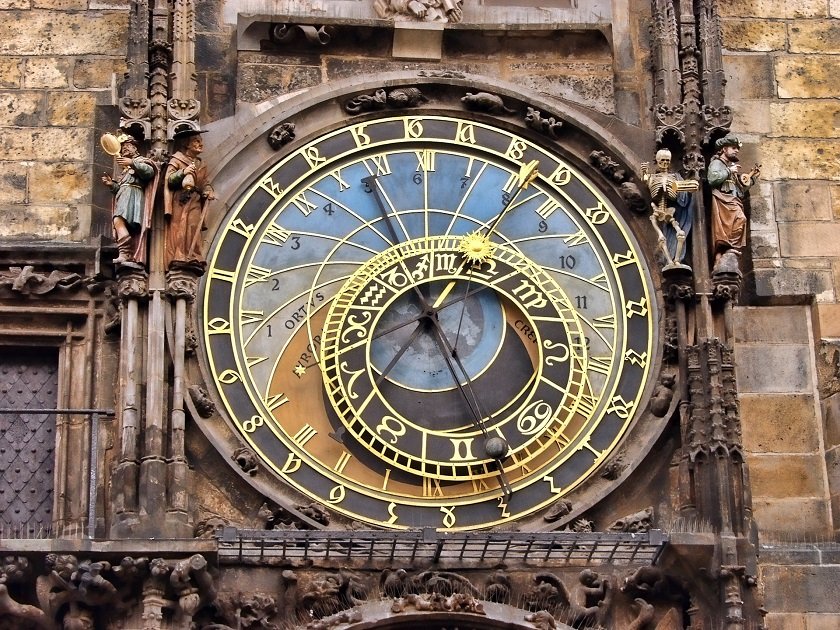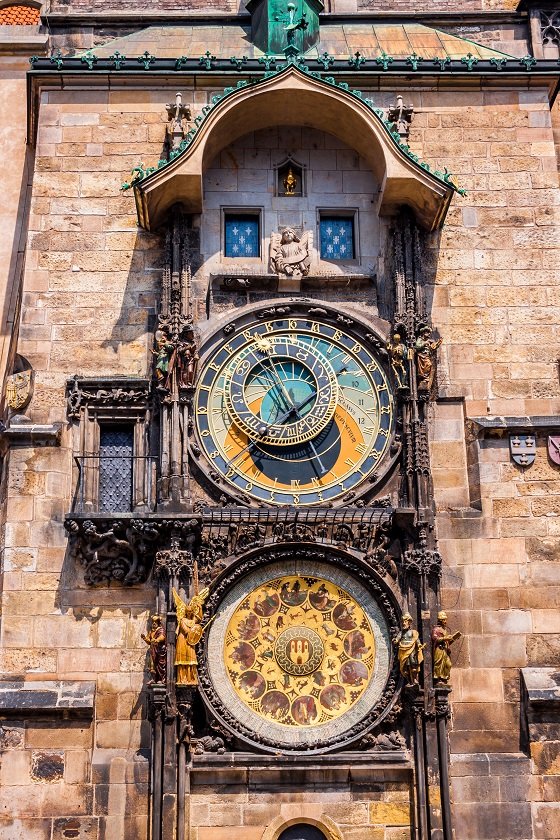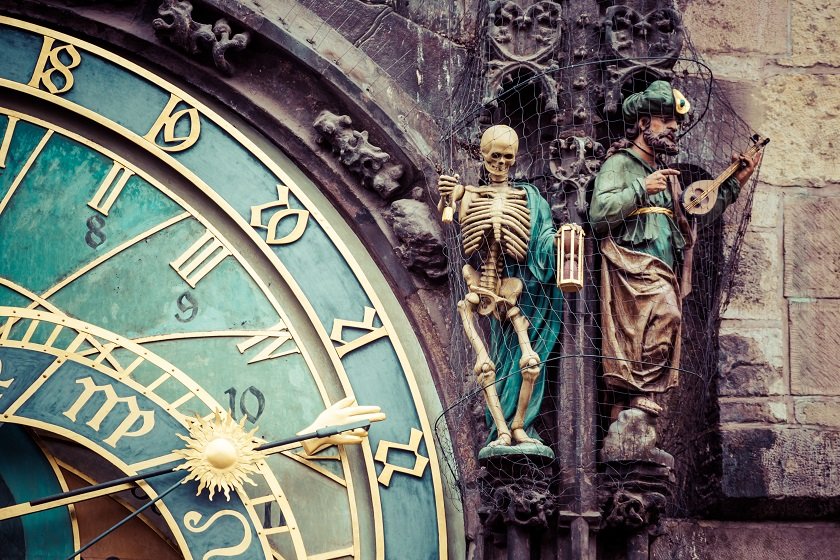Astronomical Clock
The Prague Astronomical Clock is a 600-year-old medieval mechanical clock that not only shows the date and time, but also tracks the position of the Moon and the Sun in the sky and displays astronomical cycles and holidays in the Christian Calendar (the astronomical dial). The clock was mounted on the front façade of the Old Town Hall in 1410 and today represents the oldest mechanical clock in the world. At the top of every hour (9am – 11pm), a procession of 12 apostles appears in the small windows above the clock. In addition, other figures also go into action – the Skeleton, the Turk, the Miser and the Vanity. The best spot for watching the show of the Astronomical Clock is the Old Town Square or the Chapel of the Old Town Hall (where it is necessary to pay an entrance fee).
Useful information for visitors
Public transport connections
Staroměstská bus stop, tram stop, metro station (green line)
Můstek metro station (green, yellow line)
Opening hours and admission
Visitors can watch the Astronomical Clock in the Old Town Square free of charge. An admission fee is required to enter the Old Town Hall, where the figures of the apostles can be viewed closely. More information about admission fees and opening hours here.
Interesting facts about Astronomical Clock
The Astronomical Clock consists of several components: the astronomical dial (a model of the Ptolemaic solar system), the calendar dial (with medallions representing the months, zodiac signs, a Church calendar, etc.), and the figures of the 12 apostles that appear in the two small windows above the clock every hour. These have nothing to do with the measuring of time, but serve as mere decoration. In the 19th century, the Old Clock stopped working and was to be replaced, but eventually a major repair was carried out. The Prague Astronomical Clock was originally driven by a single machine, but later a chiming machine and the Moon machine were added. In the 19th century, a chronometer was added to drive the main machine.
According to legend, the Prague Astronomical Clock was created by clockmaker Hanuš, who was later blinded so that he couldn’t repeat his work anywhere else. However, there is no historical evidence for this legend.












